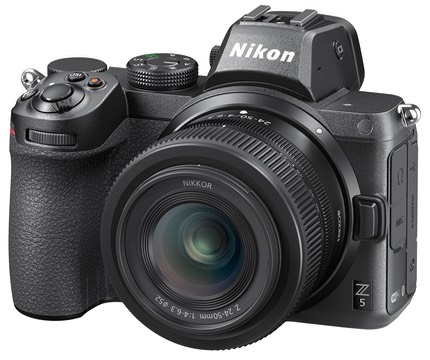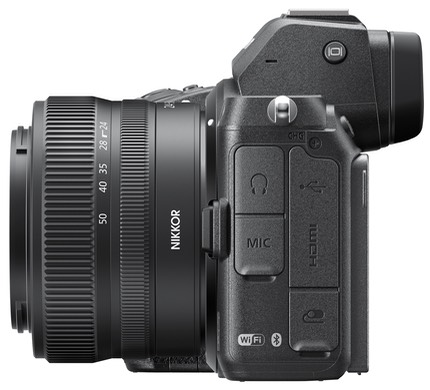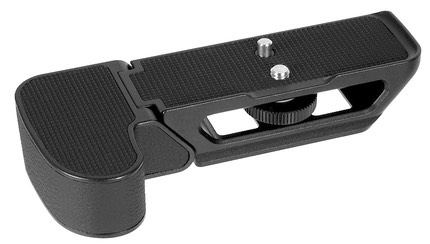Note: Nikon's previous product releases this year all date back to January and early February. It's likely that the virus has slowed the announcements and delivery of new Nikon products, as two of the five products they introduced in 2020 are in short supply (D6 and 24-200mm S) and one is still missing in action (70-200mm f/2.8 S).
________________________
If you talk to most of the Nikon faithful and ask them what Z camera was next, they'd tell you that it would be a high-end camera above the Z7. Nope, turns out the new camera is a entry model slotted below the Z6. In so doing, Nikon has probably baffled a few of you reading this, so pay attention.

In addition to everything else on their plate, Nikon needs to regain and hold market share. That comes mostly at the affordable price points, not high-end price points. A US$3500+ camera (above Z7), while it would do decently among the leading edge faithful, doesn't get the still-clinging-onto-D90 users to open up their pocketbook. For Nikon to succeed, it needs to get as many of those folk with older Nikon DSLRs in their closet as possible to finally get around to upgrading, and to moving to mirrorless when they do so. As I noted when the Z50 was introduced, a Z5 was not just likely to happen, but easy enough for Nikon to produce.
As it turns out, Nikon decided to go further than I probably would have with the Z5. The Z5 has a 24mp full frame sensor and the sensor-based VR system, for instance. It also allows USB powering of the camera, not just battery charging (which somehow nets us another new battery variant, the EN-EL15c). The Z5 is also the first dual slot Z camera (two SD UHS-II compatible slots). Those things are all on the surprising side for what is Nikon's new low-end full frame camera.
What's not a surprise are the various downgrades from the Z6: no top LCD, a lower resolution rear LCD, some puzzling video specifications (e.g. 1080P/60 max yet Time Code support), and a 4.5 fps maximum burst speed.

Along with the Z5 we get a previously unannounced lens—not on the road map—the 24-50mm f/4-6.3. Like the 16-50mm lens that is part of the Z50 kit, this is a ridiculously small lens when collapsed, particularly for full frame (see photo, above).
We also got the announcement of 1.4x and 2x teleconverters for the Nikon Z system. These were on everyone's wish list, even if the lenses that might best make use of them weren't available yet. The primary candidate for these converters is the 70-200mm f/2.8 S. So basically on FX you have 280mm f/4 and 400mm f/5.6 suddenly available (on DX that would be 420mm f/4, and 600mm f/5.6). Assuming that these converters work well on the 70-200mm, this is a solid placeholder for longer telephoto until the 100-400mm and 200-600mm show up. The 70-200mm f/2.8 S should show up in late August, along with the TCs.

Further, Nikon will be introducing two new accessories, the Z-GR1 extended grip and the Z-VP1 vertical bracket. I'm not a big fan of the mini-grip type of accessory, though I know some of you feel that your pinkie fingers fall off the main camera grip. Thing is, the Z5 is designed to be a small and light camera for a reason. The minute you start stacking stuff on it, you start losing that advantage.
The Z5 body only will sell for US$1399, and be available in August.
Will the Z5 sell? Absolutely. And I wouldn't be surprised to see NikonUSA make another Yellow Box offer—this time with the Z5—probably around the holidays (try for 30 days, full refund if not satisfied).
Why? Because the Z5 hits directly at two core elements of Nikon's current strategy: (1) transition DSLR users to mirrorless; and (2) transition DX users to FX. The D600/D610 was one of Nikon's most successful endeavors to date, despite all the initial shutter/sensor issues. It transitioned a lot of DX users to FX because it was a solid camera at a reasonable price (the remaining D610's with the 50mm f/1.8G lens kit today is now a bargain value). The Z5 is hitting the same basic point as the D610, though this time with a very interesting kit lens to sweeten the offer. What's missing, however, is a 50-250mm lens to round out a solid travel kit that's small (no, the DX version need not apply, as it takes the 24mp down to 9mp with the crop).
The Z6 still has some compelling elements for some, in particular the high-end video capabilities, which make the Z6 one of the best 4K ILCs available. The Z5 also opens up the potential for the eventual Z6 update, as such an upgrade would almost certainly add features and performance you don't see on the Z5, once again establishing a clear differential.
The Canon RP with the 24-105mm f/4-7.1 targets the same customer that the Nikon Z5 does. At US$1399—often selling for a bit less these days—the RP has already established the baseline for full frame mirrorless. While I'm sure most of the Internet will run around trying to compare the RP and Z5 and annoit a winner, that's not the way Canon and Nikon think of these models. Again, these are models trying to entice the existing consumer crop-sensor DSLR user to an entry full frame mirrorless camera in hopes of getting them hooked on the update/upgrade cycle again. Because both Canon and Nikon can point to mount adapters that work with most lenses in that user's closet, it's Canon Rebel user moving to an RP, Nikon DX DSLR user moving to a Z5. I doubt there will be a lot of crossover.
Finally, one thing that keeps happening with the Z's: they end up "punching above their weight." The specification sheets on launch seem to always leave plenty of people wanting. I can't even begin to list the number of things that people say Nikon "got wrong" on the Z6, Z7, and Z50. If you were to read those complaints on the Internet literally, these all must be terrible cameras that don't work very well for photography or video.
The reality is that Nikon has been designing to purpose and getting very approachable cameras (not littered with features or complexity) that really turn out to be quite excellent photographic (and video) tools. Nikon's not trying to design Ferraris at the moment, but basically working to get the Honda Civic and Accord of photography right. I think they've hit that mark pretty successfully so far, and better so than their competitors. The Z5 simply adds another option into that mix.
Of course, we're all waiting for what Nikon will do above that four-camera middle. The Z6 and Z7 are now ready to be taken more upscale, and we don't have a Z8 or Z9 yet, both of which should be trying to break new technological frontiers. But consider this for a moment: if Nikon can't get enough folk buying in the middle, they probably wouldn't be around long enough to iterate a few top-end products. At much as people want to ignore this truism: the bulk of the camera buying is in the US$500-1800 range right now (body price). If you can't sell in quantity in that range, you just won't have the financial fundamentals to justify the R&D necessary for the range above that. Moreover, you won't have customers to upgrade to the higher end cameras.
